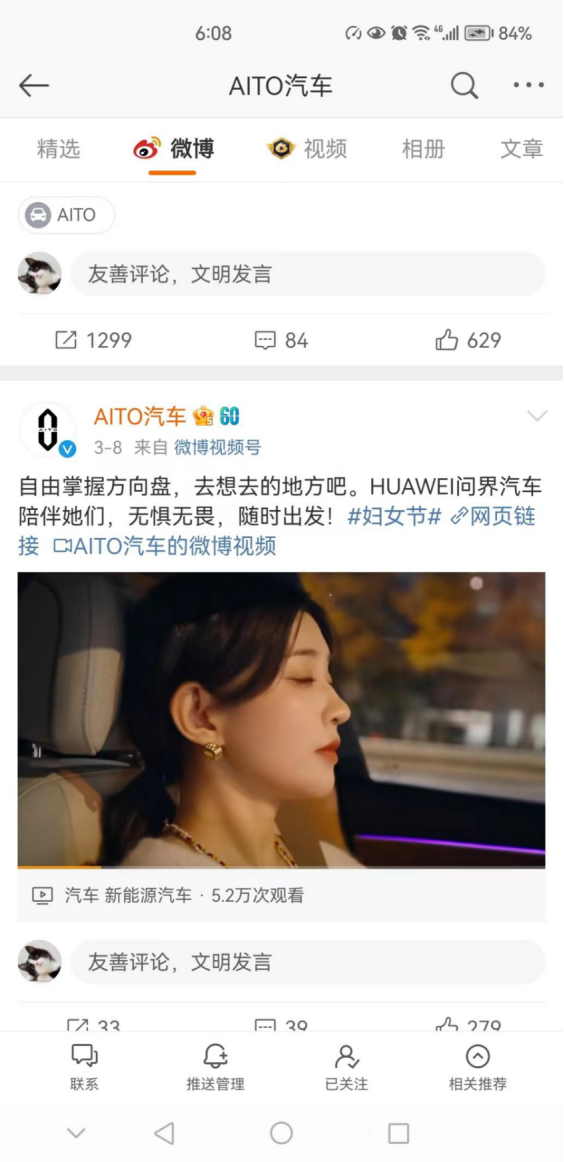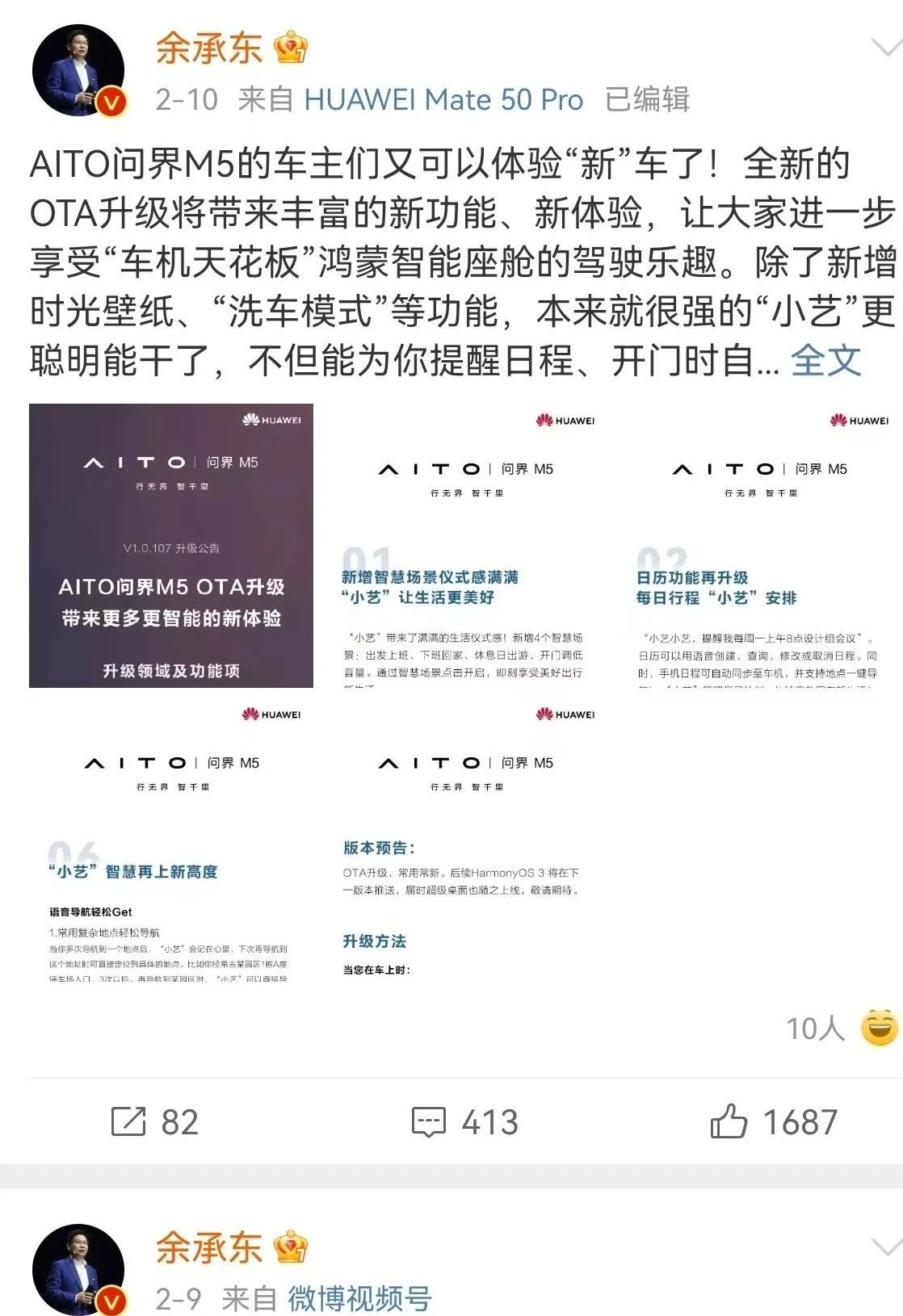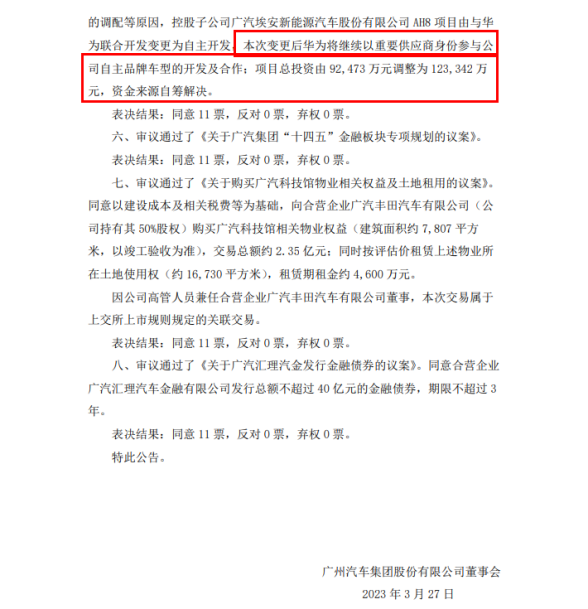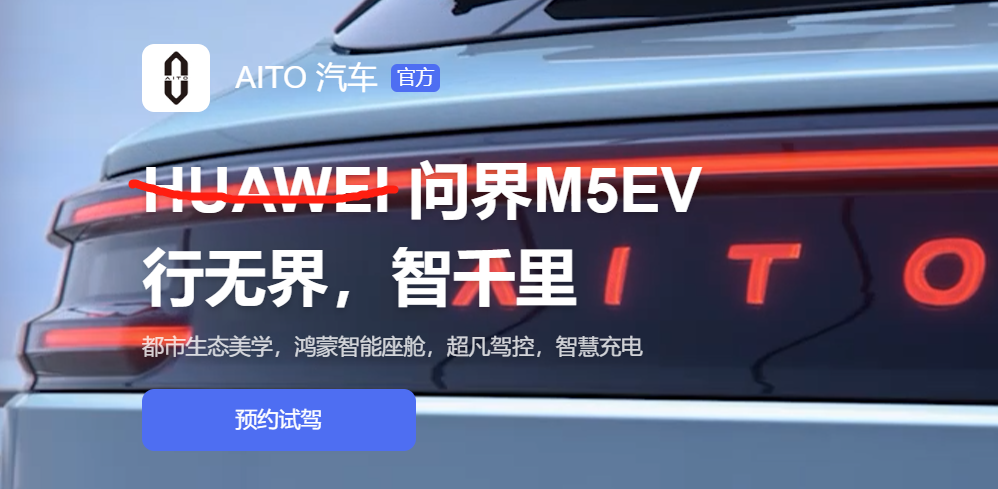Author | Wang Lingfang
Editor | Qiu Kaijun
“Some departments, individuals, or partners are abusing the Huawei brand, and this issue is under investigation.”
On March 31st, at the Huawei 2022 annual report conference, Huawei’s current rotating chairman, Xu Zhijun, responded when the media asked about AITO automobile promotional materials being changed to “HUAWEI Wèn Jiè.”
It is not yet known what impact this response will have on Huawei’s automotive business and AITO Wèn Jiè. However, this statement clearly points to the automotive business department led by Huawei Consumer Business CEO Richard Yu.
On the evening of March 31st, Richard Yu commented on the “Decision on the Management of Intelligent Automotive Components Business” released by Huawei in November 2020 in the “Voice Community”:
“The times have changed, and this will only make things more difficult for us! In a few years, everyone will understand! Let time be the judge!”
“For an industry, only deep insight and profound understanding can grasp the correct direction! Mark it down and check back in a few years!”
It is this document that states Huawei will not produce cars. And on the same day, Huawei released another document reiterating that it will not produce cars. Xu Zhijun also reaffirmed this at the annual report conference.
This new round of “not producing cars” seems even more intense than before.
Reiterating not to produce cars
“Huawei’s strategy has not changed. We will not produce cars but help automakers build better cars. Some departments, individuals, or partners are abusing the Huawei brand, and this issue is under investigation. Huawei’s brand, built over more than 30 years, will not be abused by anyone. Huawei is not producing cars, nor does it have any branded vehicles. The use of the Huawei brand as an automobile brand is strictly prohibited. Promotional materials, such as those in flagship stores, will be rectified to align with our strategy.“
At the Huawei 2022 annual report conference, Xu Zhijun once again responded to the “Huawei car-making” rumors. Xu Zhijun stated, “We just issued the EMT (Huawei Business Management Team Document) resolution this morning, reissuing the decision not to produce cars.” Xu Zhijun explained, “Many people care about the 5-year validity, but it’s not just for 5 years; the maximum validity is only 5 years. When it expires, we will issue another 5-year term. Huawei’s strategy has not changed: we will not produce cars but help automakers build better cars.”
With this, a clear line is drawn for the application of the Huawei brand in the automotive industry.## The Story of “HUAWEI Wenjie”
On March 8th, promotional posters for the AITO vehicle, a collaboration between Huawei and SERES, were released on multiple social media platforms with the slogan “HUAWEI Wenjie,” replacing the previous “AITO Wenjie.” Concurrently, Huawei’s official Weibo account also posted the poster, using the same “HUAWEI Wenjie” phrase.
In response, Huawei officially stated: “HUAWEI Wenjie is Huawei’s ecosystem automotive brand, a new business model pioneered by Huawei. Huawei provides core software and hardware technologies such as electrification and intelligent components and assists automakers in selling cars through product definition, user experience, quality control, channel sales, and brand marketing. At the same time, this helps scale sales of Huawei’s smart car components. SERES is the earliest and deepest collaborator with Huawei. The two parties signed an agreement to deepen their business cooperation in February of this year. Both parties will also further promote the establishment of a joint innovation center to provide users with a more efficient and convenient smart travel experience, leading the new era of automotive industry intelligence.”
Meanwhile, SERES responded: “The company’s long-term, deep, cross-border collaboration with Huawei and the cooperation model have not changed. The two parties will further deepen joint business cooperation, and in the future, more competitive new products favored by users will be launched.”
However, just over 20 days later, Huawei’s attitude took a sharp turn, and it apparently had not coordinated with Wenjie beforehand. At 6:08 PM after the press conference, “Electric Vehicle Observer” saw that the promotional posters and Huawei Wenjie slogans were still present on ATIO Wenjie’s Weibo on March 8th.

Nonetheless, the poster featuring “HUAWEI Wenjie” has been removed from Huawei’s official Weibo account, and the relevant post was deleted that day.
In fact, as early as February 10th, the “AITO” logo in AITO’s promotional posters was replaced with a Huawei logo featuring a chrysanthemum pattern. On the same day, Huawei’s Executive Director, Terminal BG CEO, and Smart Automotive Solution BU CEO, Yu Chengdong, released a promotional image for Wenjie M5, also changing the logo to Huawei’s chrysanthemum pattern. This incident, too, attracted significant attention within the industry.
Regarding the news of “Huawei fully dominating AITO”, Huawei responded by saying there were misunderstandings, and further stated: “This move is merely to highlight Huawei’s long-term deep empowerment of the AITO brand. There has been no change in the long-term deep cooperation between Huawei and Seres, and both parties will continue to jointly launch more competitive new products in the future.”
In fact, since February, there have been rumors in the market that “a large number of Huawei R&D personnel have withdrawn from Seres, and Seres has become a Huawei foundry.” In response to this news, Seres replied on the listed company Q&A platform: “This is false news, and there has been no change in the long-term deep cross-border cooperation between our company and Huawei.”
As for whether the collaboration between Huawei and Seres using the smart selection mode will become a Huawei foundry, Yu Chengdong also responded: “Some people say that Seres is a foundry model, but in fact, both parties are jointly engaged in R&D. Huawei not only provides components, but also involves design, quality, user experience, overall quality control, OTA version upgrades, and understanding consumer needs, continuously upgrading software based on customer satisfaction and dissatisfaction.”
At this time, Seres has found its way, launching a new brand. On March 30th, Chongqing Seres Lan Electric Vehicle Co., Ltd., a subsidiary of the Seres Group, officially launched a new new energy vehicle brand – Lan Electric – and debuted its first product, the Lan Electric E5.
A combination of events has made the relationship between Huawei and Seres even more elusive.
However, Electric Vehicle Observer speculates that placing the Huawei brand before AITO might cause industry insiders and consumers to think that Seres is Huawei’s foundry for complete vehicles, which clearly violates government restrictions on foundries (as stated in official documents). Huawei’s actions to distance itself can thus be understood.
In fact, changes in Huawei’s relationships with vehicle manufacturers are not limited to this one. Recently, the partnership between GAC Group and Huawei was downgraded. On the evening of March 27th, GAC Group announced that its 6th Board of Directors approved the “Proposal for Changes in GAC Aion AH8 Project”. Due to resource allocation and other factors, the controlling subsidiary GAC Aion New Energy Vehicle Co., Ltd.’s AH8 project will change from joint development with Huawei to independent development. After the change, Huawei will continue to participate in the development and cooperation of the company’s self-brand models as an important supplier; the total investment of the project will be adjusted from 925 million yuan to 1.233 billion yuan, and the project funds will be taken care of.
As of now, the AH8 project has transitioned from joint development with Huawei to independent development.
According to Huawei’s previous announcement, GAC Group is one of the three automakers adopting the Huawei Inside (HI) model for cooperation. The HI model incorporates Huawei’s full-stack intelligent automotive solution, with Huawei and partners jointly defining, developing, and creating a brand, carrying the HI logo on the vehicles.
A series of events in March suggest that Huawei may be reassessing its relationships with automakers, and it remains uncertain whether a new collaboration framework will emerge in the future.
This article is a translation by ChatGPT of a Chinese report from 42HOW. If you have any questions about it, please email bd@42how.com.
